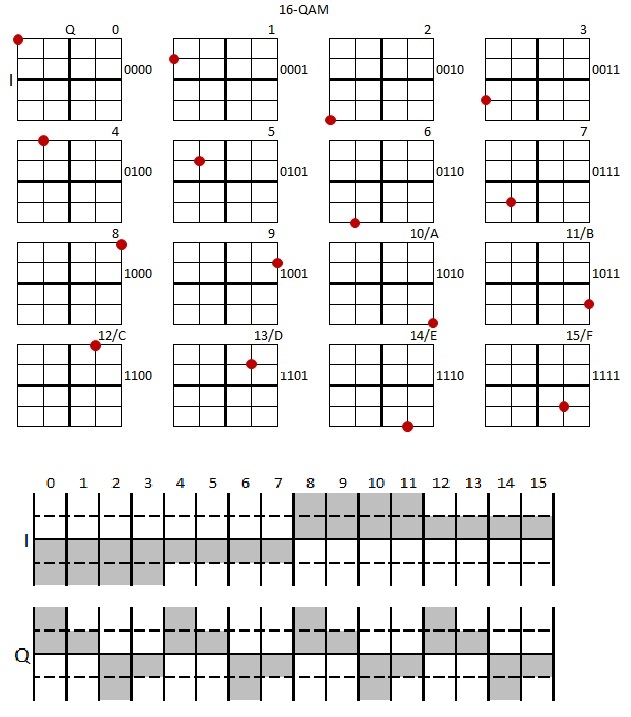
QAM (Quadrature Amplitude Moduation)- The Quadrature means two-axis, 90 degrees from each other.
Much like color we have an I (In-phase) and a Q (Quadrature) components.
QAM is a form of compression. Here with 16-QAM, every clock cycle we can send a signal pulse that represents one of 16 states.
As you can see at the top it takes four bits to convey 16 possible states.

If we divided each cycle or baud into 8 phase positions and allowed for four positive and four negative values (8)
we could convey one of 256 values per baud - 256 QAM. That would be one 8 bit byte per baud.